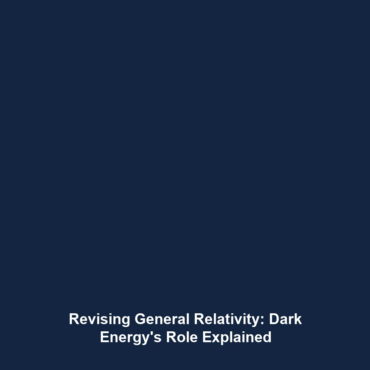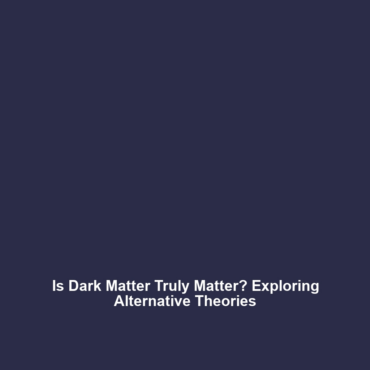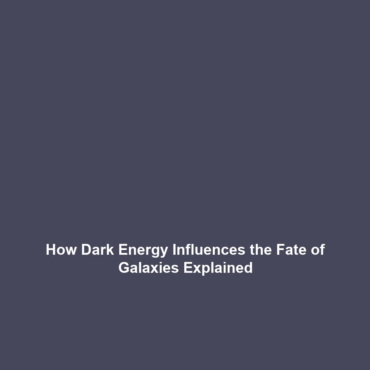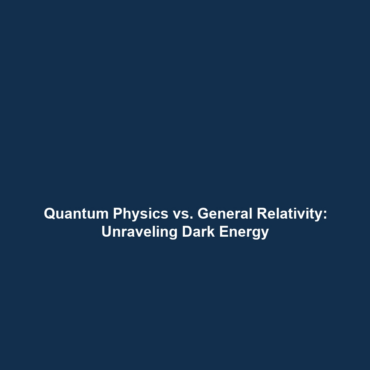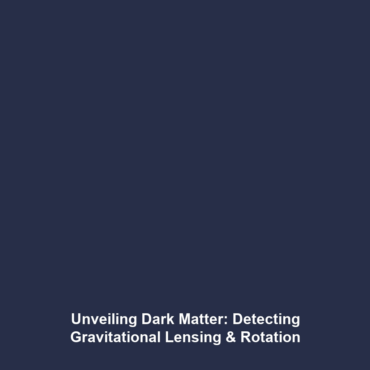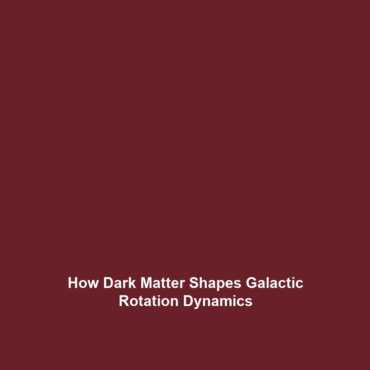<>
Quintessence: A Dynamic Alternative to Dark Energy
Introduction
Quintessence stands as a fascinating concept within cosmology, offering a dynamic alternative to the mysterious dark energy that pervades our universe. As researchers delve deeper into the realms of dark matter and dark energy, the need for a robust understanding of Quintessence becomes increasingly critical. This alternative not only challenges existing theories but also opens new avenues for explaining cosmic acceleration, making it a pivotal topic in modern astrophysical research.
Key Concepts
Defining Quintessence
Quintessence refers to a hypothetical form of dark energy characterized by a scalar field, which varies in time and space, unlike the cosmological constant associated with static dark energy. This dynamic nature allows Quintessence to influence the expansion of the universe differently at various stages of cosmic evolution.
Integration with Dark Matter & Dark Energy
In the broader context of dark matter and dark energy, Quintessence plays a significant role in our understanding of cosmic phenomena. By providing a variable energy density, Quintessence potentially resolves issues related to the fine-tuning of dark energy models and offers insights into the interplay between dark matter and the universe’s expansion.
Applications and Real-World Uses
The implications of Quintessence extend beyond theoretical frameworks, influencing various fields within astrophysics and cosmology. Some practical applications include:
- Enhancing calculations related to cosmic structure formation.
- Improving models of galaxy evolution in a dark energy-dominated universe.
- Refining methods for detecting and measuring dark energy through observational data.
Essentially, understanding how Quintessence is used in dark matter and dark energy research is pivotal for gaining a comprehensive view of the universe’s mechanics.
Current Challenges
Examining Quintessence poses numerous challenges that researchers must address:
- Complexity of Scalar Fields: Understanding the behavior of scalar fields in various cosmological scenarios remains an intricate task.
- Experimental Limitations: The detection of Quintessence is hindered by current observational technologies, making empirical validation difficult.
- Theoretical Constraints: Integrating Quintessence models with general relativity without leading to inconsistencies is a significant theoretical hurdle.
Future Research and Innovations
Future research on Quintessence is poised to lead to groundbreaking innovations in our understanding of the universe. Potential areas of focus include:
- Development of advanced observational techniques to detect Quintessence signals.
- Innovations in computational modeling to simulate the effects of dynamic dark energy on cosmic evolution.
- Collaboration between astrophysical theorists and experimental physicists to bridge gaps in knowledge about dark energy.
Conclusion
Quintessence serves as a compelling dynamic alternative to dark energy, significantly contributing to the field of dark matter and dark energy research. As ongoing studies and innovations continue to unveil the complexities of the universe, it is essential for scholars and enthusiasts alike to engage with these evolving concepts. For further exploration, consider reading more about dark matter theories or the role of dark energy in cosmic expansion.



